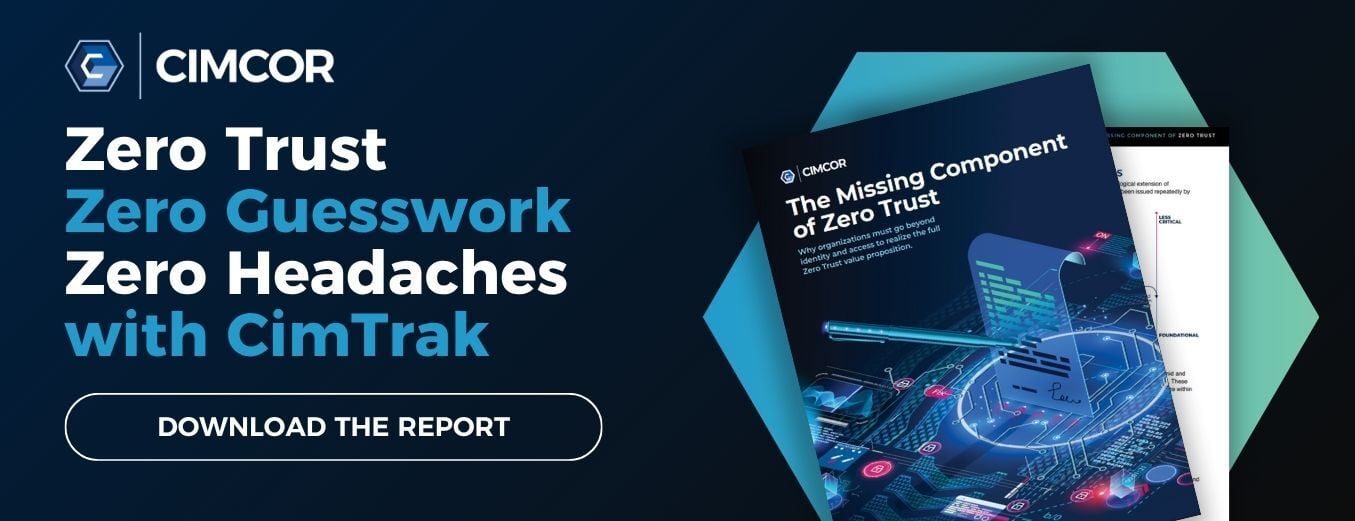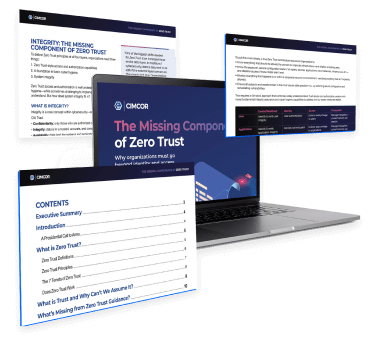You want to do what’s best for your business's data security, both in terms of cost and effectiveness. That sounds simple enough, but sometimes it is difficult to know which option is truly best for your organization. The question of Zero Trust vs. VPN is one such question.
Of course, the overall goal for everyone in your organization is to keep data safe and maintain compliance with data security requirements. If your workplace, like many others, has implemented hybrid or remote-work options in the past few years, this tall order has gotten quite a bit taller.
You have several options to secure your organization's data and enable staff to work remotely, but Zero Trust Networks and VPNs are two of the most common solutions.
Let’s take a closer look at the Zero Trust vs. VPN question. We’ll examine each solution's pros, cons, and best use-cases.
Zero Trust vs. VPN: Cybersecurity Trends in 2022
Cybercrime is ever-evolving. As a result, cybersecurity measures are in a constant state of growth and change. Cybersecurity teams have struggled with new challenges like increased remote work, reliance on cloud services, and smarter social engineering attacks. These trends have made protecting company data through traditional perimeter security next to impossible.
As a result, companies have started to approach cybersecurity using different methods. Multi-factor authentication has become increasingly important, as have conversations regarding mobile cybersecurity efforts.
When trying to protect your organization from developing threats in this modern environment, which is better: Zero Trust or VPNs?
Zero Trust
Let’s first discuss Zero Trust. Zero Trust is an approach to cybersecurity that requires you to remove all implicit trust from your organization’s access policies and procedures. If this framework is adopted, you can avoid giving any user, device, or network full access to all company resources.
Zero Trust is built on three principles:
- Assume Breach: At all times, organizations should assume internal environments may not be secure, and minimize breach impact, security controls should be implemented.
- Verify Explicitly: Rather than trusting that everyone inside your corporate firewall is safe, explicitly verify by continuously monitoring enterprise assets to ensure they are in the state they should be in.
- Least Privilege Access: To minimize the potential impact of malicious activity, access for devices, users, and services should be minimal.
Pros of Zero Trust
The Zero Trust model of cybersecurity comes with multiple benefits. Let’s discuss five of those benefits.
- Decreased attack surface: By removing implicit trust, you reduce the number of entry points an attacker could leverage in a breach.
- Limited lateral spread: Least privilege access means that, even if an attacker does breach your perimeter, they will only be able to access a small portion of your assets.
- Unified security and access control: Adopting Zero Trust forces you to create access control policies and procedures that impact the whole organization.
- Increased visibility: The fine-grain access control inherent to Zero Trust gives you increased visibility into each user’s permissions and movement within the system.
- Continuous compliance: By continuously monitoring all users’ data access and permissions, you will have a built-in audit trail that allows you to remain continually compliant.
Zero Trust Challenges
No solution is without its challenges, and Zero Trust is no exception. When you pursue a Zero Trust solution, you must remember that challenges like ransomware can still impact your organization under this type of solution. Zero Trust removes the element of data exfiltration issues, but ransomware may still impact your organization.
Additionally, you may struggle with finding a vendor capable of delivering a complete Zero Trust solution. You may need to work with multiple vendors to achieve a full Zero Trust solution. While this is not a direct fault of Zero Trust itself, it can make the solution more challenging and resource-intensive to implement.
VPN
VPN stands for Virtual Private Network. Rather than adjusting your entire cybersecurity infrastructure with a VPN, you’ll allow users to enter your company’s secure perimeter through a virtual gateway. A VPN-based approach to security assumes that everything outside the perimeter is a potential threat, but everything inside may be trusted.
Pros of VPNs
VPNs can offer several benefits to your organization. Let’s examine a few.
- End-User IP: When using a VPN, your end-users IP addresses will change to reflect the VPN rather than the IP of their local machine.
- Hostile Environment Protection: If your users are accessing company data from an unsecured network, for example, a hotel’s wifi while traveling for work, a VPN will help protect your data from the associated risks.
- Remote Access: A VPN allows your staff to access your organization’s local network remotely. This ability is helpful if you use shared drives or other similar features to conduct business.
VPN Challenges
Armed with the pros of VPNs, let’s now consider the challenges with this approach to cybersecurity in the modern environment.
- Slower connection: Since all traffic must pass through a VPN server, your users will experience slower internet speeds when accessing your network via your VPN.
- Security patches: Your VPN will need consistent maintenance and security patches to keep your system safe.
- Internal threats: Though a VPN helps you rebuff attacks originating outside your network, a VPN will not assist you with the dangers associated with internal threats.
- Scaling: It can be challenging to scale your VPN as your business grows. The more users access your system via a VPN, the more performance issues you will experience.
- Cloud-based applications: You will need a separate VPN to manage all your cloud-based applications from the VPN used for local data access.
Choosing the Best Solution
After examining the options, you’ll need to choose the best cybersecurity solution for your business.
For some businesses, like government contractors, the decision is easy as Zero Trust is mandated. Zero Trust is also a better solution for mid to large-sized organizations due to its scalability and security.
VPNs still have their place in the cybersecurity world. The best use case for VPNs is employees accessing company resources using public wifi. VPNs are also a great resource for individuals seeking to increase online security. This can lead many to believe Zero Trust is a better solution for securing your data than simply using a VPN.
Cybersecurity Beyond Zero Trust vs. VPN
With an understanding of the similarities and differences between VPNs and Zero Trust, you can see that VPNs aren’t even in the same cybersecurity category as a Zero Trust Network Architecture.
Implementing a Zero Trust architecture can appear to be a challenge initially, but it’s worth the upfront time and effort. Implementing an appropriate cybersecurity tool can make your Zero Trust management efforts easier and more streamlined.
Explore a file integrity monitoring software to help maintain an environment with Zero Trust architecture. CimTrak is a file integrity monitoring tool that prioritizes alerts, automatically rolling back low-level unauthorized changes and letting your team focus on only the alerts that matter most. Request a demo today to see CimTrak in action.
To arm yourself with all the information you need to implement a Zero Trust Architecture, download our ebook, Missing Components of Zero Trust.
Tags:
Zero Trust
September 22, 2022




